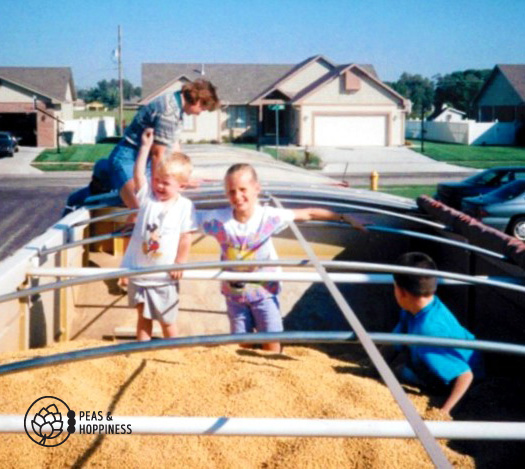
My favorite childhood playground: the grain truck, followed closely by the time I spent in the kitchen with my mom helping her “make lunches” for the harvest crew.
Most people think that Kansas is land-locked. They would be right — except for June, when seas of golden wheat stretch across the plains. Millions of stalks of grain shift in the hot summer breeze, creating the illusion of waves gently sloshing in the fields of ocean.
I love this time of year.
As a kid, riding on the combine during harvest was one of my favorite activities, right up there with playing in the grain truck and helping my mom make “lunches” for the harvest crew. As an adult, I can’t say that my favorite activities have changed all that much.
Wheat in Modern Agriculture
Wheat has been around for millennia, with significance in many of the major world religions – the matzo of Passover and the communion wafers of Christianity, for example. In Muslim countries, the daily bread that is eaten is also treated as sacred.
Farmers began domesticating and selectively breeding the grass-like plant about 9,000 years ago in Southwest Asia. Since that time, wheat has become one of the major world grains, representing one of the top three most important grains for human consumption. World-wide, wheat supplies about 20% of the calories of the world population.
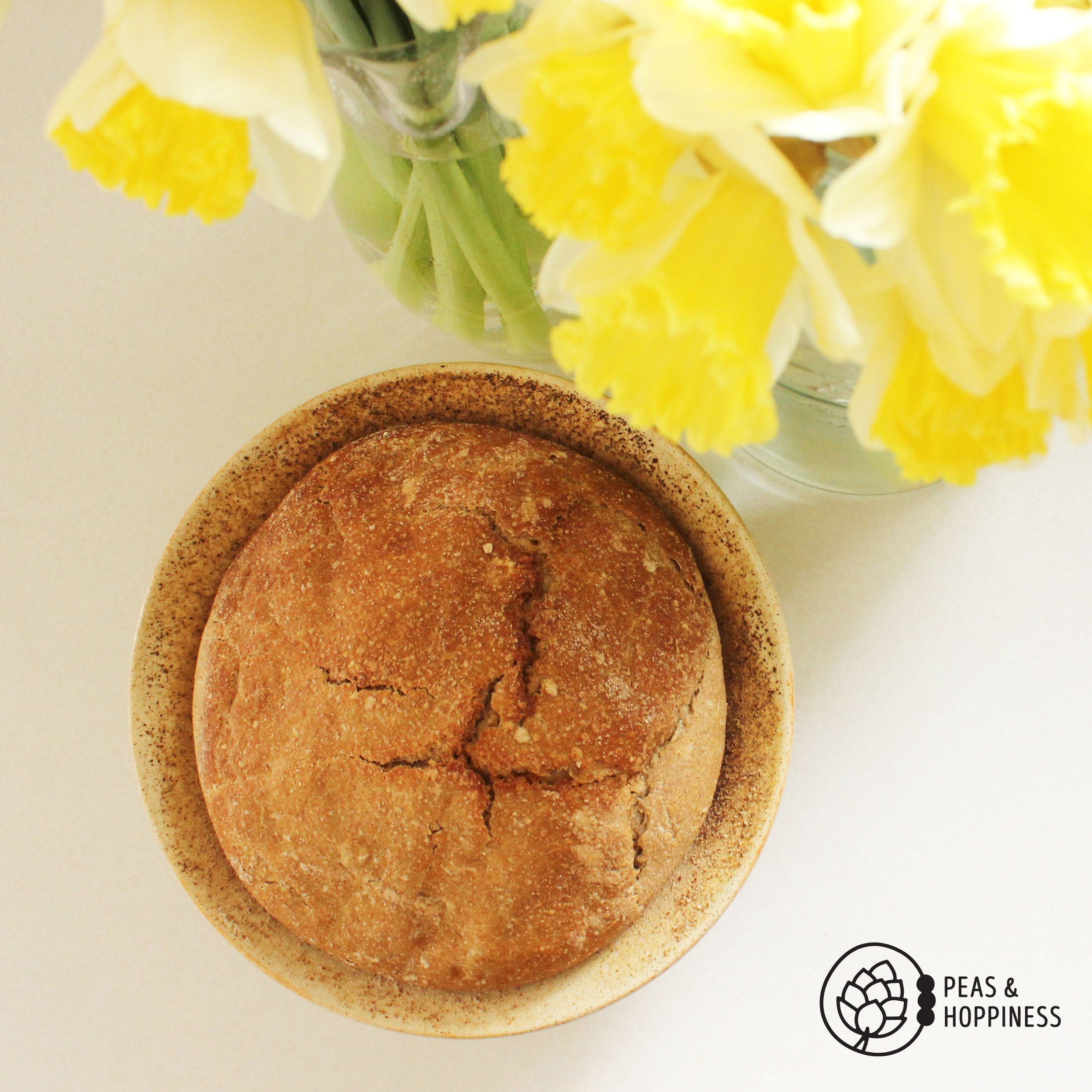
Use your wheat flour to make this Easy Artisan Sourdough Bread
Wheat grows well in areas that are unsuitable for most other crops. And what better describes Kansas weather than wind-swept prairies, frigid winters, and unpredictable rainfall? Let’s face it, if they were both on eHarmony, Kansas and wheat would be a perfect match.
Unlike some of the other modern grains, wheat has only been selectively bred and has not yet been genetically modified. While there was a scandal about genetically-modified (GM) wheat being grown in Montana, there is currently no commercially available GM wheat grown in the US.
How is Wheat Used?
Wheat is one of my favorite crops on the farm because it’s main use is human food. Can you guess what is the most common food made from wheat? Yes, bread! Pizza, biscuits, muffins, pastries, crackers, etc., etc. Just ask your close friend with Celiac disease how many products contain wheat, and you’ll understand how obvious it is that 1 in every 5 calories comes from this grain.
Read More: Does this Gluten Make my Butt Look Big? Celiac Disease, Gluten Sensitivity, and the Gluten-Free Diet
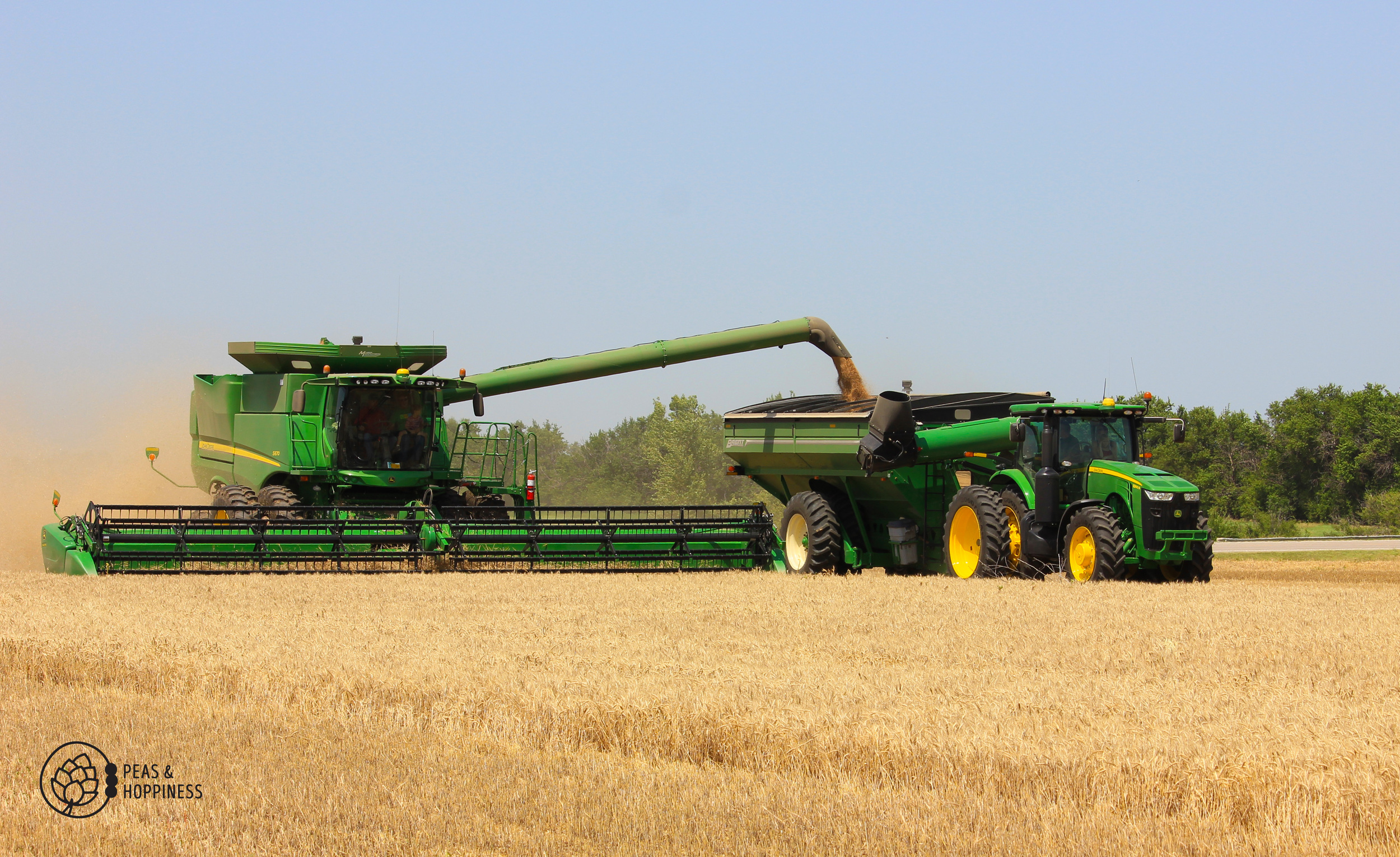
Combine unloading into the grain cart. Instead of stopping to take time to unload directly into the semi, unloading into a grain cart which then takes the grain to the semi allows Dad to continuously cut wheat without missing a beat.
Wheat’s main protein is gluten. Gluten is made of glutenin and gliadin; when combined with water and kneaded, these proteins activate and gluten becomes stretchy. The stretchy gluten is what traps the carbon dioxide that yeast burps out during rising and allows bread to become light and airy.
Without gluten, it’s very difficult to bake bread that is anything but dense and grainy. Gluten-free flour blends are usually composed of various other starchy flours (such as potato, tapioca, or rice) and includes a binder of some type, like xanthan gum to help the flour stick together. Although there are more and more options for gluten-free living, anybody living with Celiac disease or a gluten sensitivity will tell you that there’s just nothing quite like gluten-containing bread.
Wheat’s Nemesis: Cheat and Rye
When I introduced you to milo, I explained how each crop has a particular weed that is hard to control. The “nemesis” weed is similar enough to the crop that if an herbicide kills the weed, it will also kill the crop. For wheat, there are two: cheat and rye.
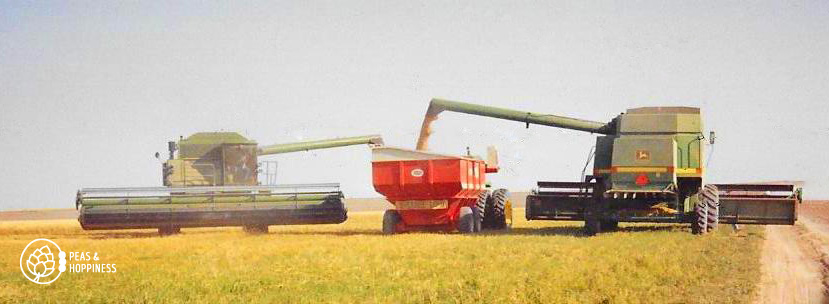
Flashback to wheat harvest 1989
Proper crop rotation – meaning cycling through various crops every year instead of planting the same crop in the same field year after year (check out this post) – can significantly help this problem. There are also some new herbicides that are effective against these weeds – but using them always requires a cost-benefit analysis (i.e. is it worth it to spend the money to buy these expensive chemicals?).
Of course, a farmer who has kids can always hire those unsuspecting young’uns to walk the hot rows of wheat and hand-pluck these annoying weeds (see: roguing wheat). Thanks for “encouraging” me to work hard at a young age so that I really appreciate my air-conditioned desk job, Mom and Dad. 😉
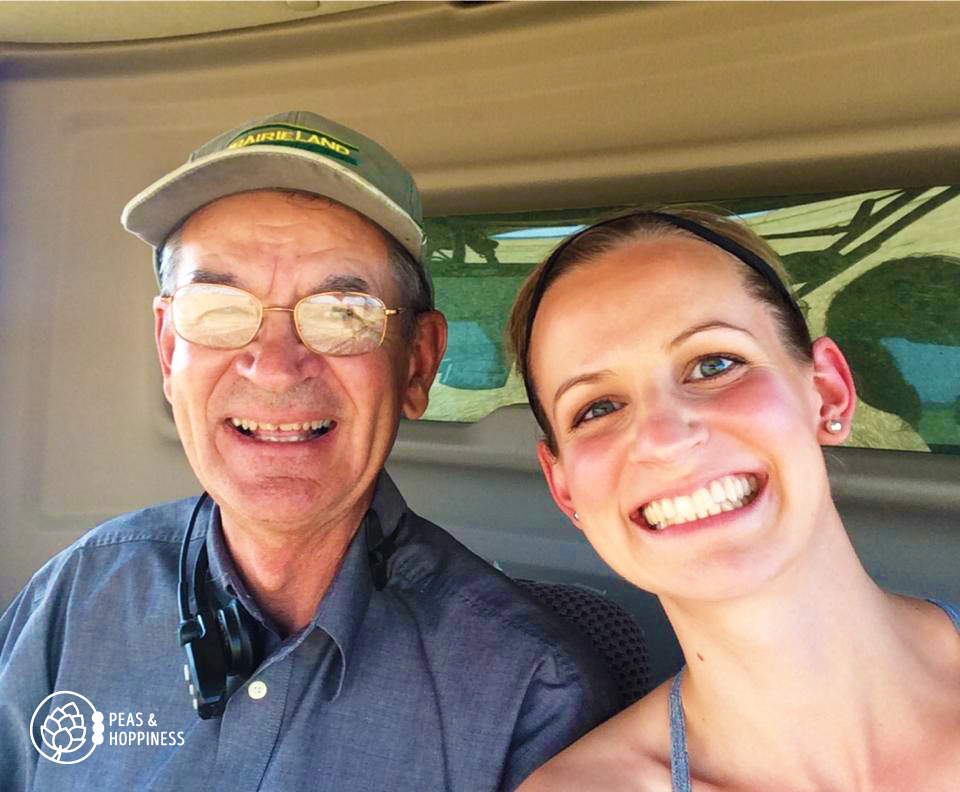
Dad, Lee Scheufler, and me in the cab of the combine during wheat harvest 2014. Happy Father’s Day, Dad!
On this Father’s Day, my dad is in his favorite place: sitting in the cab of the combine. Wish I was there with you today, Dad, but I’m glad you’re doing what you love.
Happy wheat harvest,
Ann from Peas & Hoppiness
For more reading about modern American agriculture, you might like these recent posts:
Rained Out: A Story of Mitigating Risk
The Next Generation of American Agriculture
Does this Gluten Make my Butt Look Big? Celiac Disease, Gluten Sensitivity, and the Gluten-Free Diet
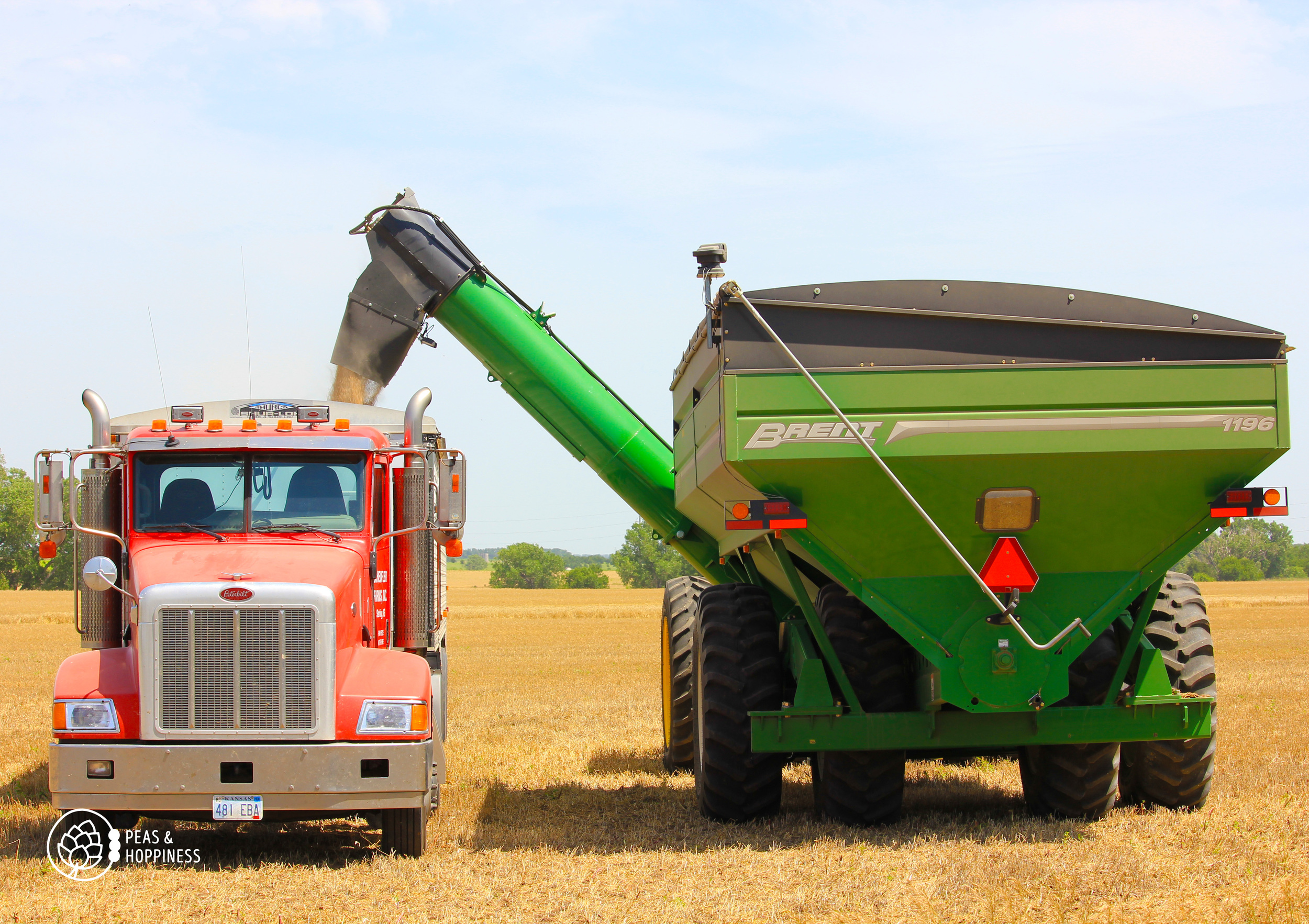
Loading the semi
4 thoughts on “Kansas Wheat Harvest”
Loved reading this Ann, I used to ride in the combine cab with my dad and, once in awhile, actually run the combine. His combine was nothing like your dad’s combine.
Nice Father’s Day tribute. Your dad’s expertise in farming my little plot of land means the world to me and I look forward to seeing your parents in a few weeks when I come to Kansas for a few days.
Rita
I’m a little (or a lot) late in my reply, but thank you for your comment! I always love to hear from the people that Dad farms for. Hope you are doing well!
I met your mother in the beauty shop and she told me about your "Peas and Hoppiness". I really enjoyed reading this, and I am so pleased you are using your excellent writing skills! Your teacher from just yesterday!! Lola Wall
Thank you, Mrs. Wall (do I still call you that?)! Hope you are doing well. The writing skills you taught me have certainly served me well as an adult. I am always (and eternally) grateful for the incredible teachers I had from grade school through grad school.